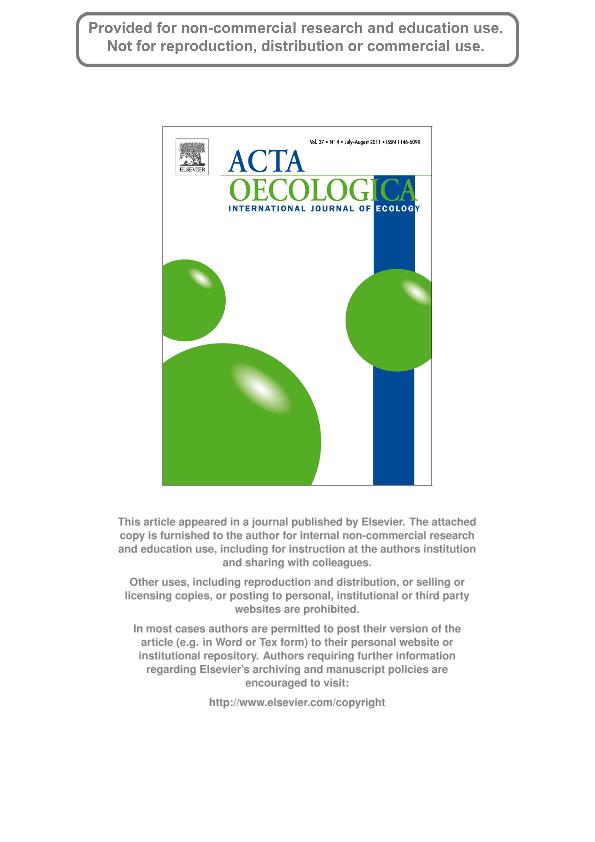Artículo
Fire and grazing differentially affect aerial biomass and species composition in Andean grasslands
Fecha de publicación:
04/2011
Editorial:
Gauthier-Villars/Editions Elsevier
Revista:
Acta Oecologica
ISSN:
1146-609X
Idioma:
Inglés
Tipo de recurso:
Artículo publicado
Clasificación temática:
Resumen
Grazing and fire have been the most common disturbances in many grasslands ecosystems for many centuries. However, some mountain regions are currently experiencing a decrease in land use, and therefore in frequency or intensity of these disturbances. In this study, we evaluated how fire and grazing affect vegetation structure in mountain grasslands of NW Argentina. We hypothesized that they would have differential effects on plant species richness, vegetation composition and aerial biomass dynamics, predicting that fire would have a stronger effect on these variables than grazing. We tested this hypothesis by performing a controlled field experiment in which we manipulated fire and compared grazed plots with ungrazed exclosures, simulating current (high frequent fires and low livestock load) and future (fire suppression and grazing exclosure) scenarios. We recorded total of 90 species with 40 shared among all treatments. Tussock grasses (Elionurus muticus), followed by three shrubs represented the main contribution to live biomass in all treatments. Species richness, equitativity and diversity were higher in burned plots. Multivariate ordination indicated that burning is more important than grazing in determining plot to plot similarity in species composition. Burning reduced total aerial biomass, standing dead biomass and litter, as well as live biomass, that was also reduced by grazing. Burning also reduced standing dead biomass and litter proportions, but increased live biomass contribution, showing a more evident effect within the grazed plots. Burning, seasonality and growing season had significant effects on the relative contribution of all biomass categories. Biomass consumption showed a strong seasonality, being significantly higher in January of both growing seasons, and it was not affected by burning. We conclude that under the current fire and grazing scenario, fire plays a more important role than grazing in shaping these grasslands dynamics.
Archivos asociados
Licencia
Identificadores
Colecciones
Articulos(CCT - NOA SUR)
Articulos de CTRO.CIENTIFICO TECNOL.CONICET - NOA SUR
Articulos de CTRO.CIENTIFICO TECNOL.CONICET - NOA SUR
Articulos(IMBIV)
Articulos de INST.MULTIDISCIPL.DE BIOLOGIA VEGETAL (P)
Articulos de INST.MULTIDISCIPL.DE BIOLOGIA VEGETAL (P)
Citación
Carilla, Julieta; Aragón, Myriam Roxana; Gurvich, Diego Ezequiel; Fire and grazing differentially affect aerial biomass and species composition in Andean grasslands; Gauthier-Villars/Editions Elsevier; Acta Oecologica; 37; 4; 4-2011; 337-345
Compartir
Altmétricas




